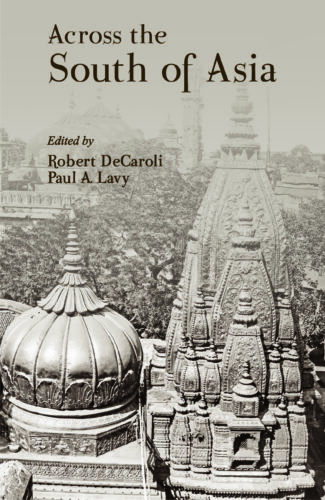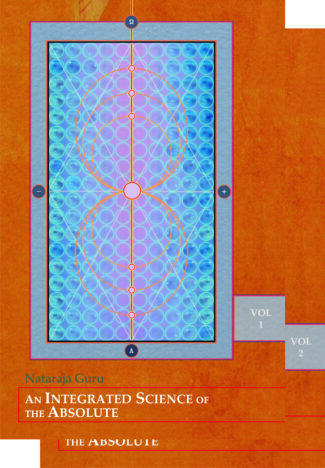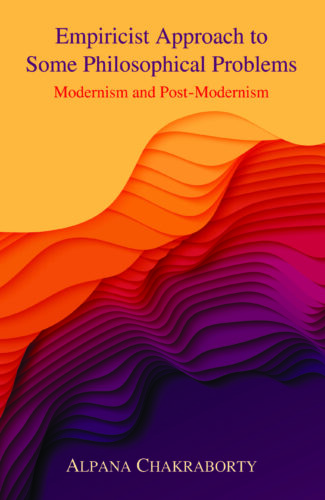Showing 1–12 of 26 results

This collection of essays takes a broad view of South Asian art and culture by providing a wide geographic and chronological scope. Each essay on its own constitutes a solid, well-grounded academic study, but taken collectively they provide a wide and inclusive view of issues of art and material culture that span the region and invite comparison.
All too often, modern scholarship limits its scope according to the boundaries of contemporary nations and current geopolitical borders. Academic expertise frequently ties itself artificially to these pre-defined spaces and in so doing often does a disservice to the past. It is no great revelation to point out that people of the past defined the limits of their political and cultural reach in ways that were very different from those found on modern maps. Ancient rulers, merchants, and priests understood the reach of their influence and defined foreignness in ways that would be deeply unfamiliar to those only knowledgeable of the modern world. Yet, despite the well-recognized truth in these observations, it is still relatively rare for scholars to research in ways that transcend modern boundaries.
This collection of essays invites readers to take a broad view of South Asian art and culture by providing a wide geographic and chronological scope. The articles are united only by their focus on art historical and archaeological concerns and their concentration on South Asia ranging from Afghanistan to the island kingdoms of Indonesia. Each essay on its own constitutes a solid, well-grounded academic study, but taken collectively they provide a wide and inclusive view of issues of art and material culture that span the region and invite comparison.
By taking this approach, this volume is a tribute to Prof. Robert L. Brown whose lifetime of teaching has always emphasized connections as well as differences. Over his professional career, he has trained a large cohort of students (many of whom are contributors to this volume) whose expertise truly does reach across the south of Asia.

It is not just the magnum opus, but a truly monumental effort of a scientist-philosopher who has spent a whole lifetime to formulate a unitive science, wherein all disciplines of human questing could find a common ground a science where modern science and ancient spiritual wisdom could meet and merge like two opposite poles of a magnet. As a direct disciple of one of the great rishis of the modern age, Nataraja Guru discovers this common ground in Brahma-vidya?, which he calls the Integrated Science of the Absolute, and which has, at its base, his Gurus Dars?ana Ma?la?.
A string of hundred Sanskrit verses, composed by the mystic-poet, Narayana Guru (18541928), the Dars?ana Ma?la? is the very epitome of all visions of truth inspired by his remarkable acquisitions of Upanis?adic thought and, yet far more, by his own tapas (mystical discipline). Reproducing these highly significative verses in Roman script, along with English translations, word meanings, and extensive commentaries, Nataraja Guru not only spells out his mentors Visions of the Absolute in contemporary idiom, but also shows how these visions are fully validated by modern science.
Eclectic synthesis of varied scientific disciplines into a systematic whole is not all that Nataraja Guru accomplishes here. Rather, his book (now in third edition) is an attempt to reintroduce Brahma-vidya? as the one Master Science that embraces every branch of science, every human interest.
It is not just the magnum opus, but a truly monumental effort of a scientist-philosopher who has spent a whole lifetime to formulate a unitive science, wherein all disciplines of human questing could find a common ground a science where modern science and ancient spiritual wisdom could meet and merge like two opposite poles of a magnet. As a direct disciple of one of the great rishis of the modern age, Nataraja Guru discovers this common ground in Brahma-vidya, which he calls the Integrated Science of the Absolute, and which has, at its base, his Gurus Dars?ana Mala.
A string of hundred Sanskrit verses, composed by the mystic-poet, Narayana Guru (18541928), the Darsana Mala is the very epitome of all visions of truth inspired by his remarkable acquisitions of Upanisadic thought and, yet far more, by his own tapas (mystical discipline). Reproducing these highly significative verses in Roman script, along with English translations, word meanings, and extensive commentaries, Nataraja Guru not only spells out his mentors Visions of the Absolute in contemporary idiom, but also shows how these visions are fully validated by modern science.
Eclectic synthesis of varied scientific disciplines into a systematic whole is not all that Nataraja Guru accomplishes here. Rather, his book (now in third edition) is an attempt to reintroduce Brahma-vidya as the one Master Science that embraces every branch of science, every human interest.

The Balagopalastuti occupies an important place both in the annals of Krishna art as well as Krishna bhakti. This book brings to light both the poetry and paintings and touches both the Krishna rasika and Bhakta.
The Balagopalastuti occupies an important place both in the annals of Krishna art as well as Krishna bhakti. This book brings to light both the poetry and paintings and touches both the Krishna rasika and Bhakta.
Renowned Vedic scholar, Pandit Madhusudan Ojha has presented in this volume a rich and ancient history of our world and civilization.
Jagadguruvaibhavam, the final part of the trilogy authored by Ojhaji on various facets of Creation, is as much an insightful work on the Vedic knowledge contained in the Vedas and Puranas as also an exceptional example of his profound knowledge and wisdom. Indravijayah (Bharatavarsha: The India Narrative in English) and Devasurkhyati are the first two volumes on the subject.
The Brahma’s Universe: The Chronicle of Creation is the English translation of Jagadguruvaibhavam prepared by a board of editors at Shri Shankar Shikshayatan headed by well-known Indologist, Prof. Kapil Kapoor.
Brahma is the central character of this book and through his forms, age and abode, Ojhaji has outlined the story of our universe’s evolution. It was Brahma who perceived that, in this world, the source of energy is the surya or sun. All spiritual, metaphysical and supraphysical energies exist in the surya. The vital energy (prana), which gives life to all beings too is produced from the sun. Brahma recorded all these in granthas (volumes) that came to be known as the Vedas.
Written in verse form, the volume offers a unique rendering of the creation of atma, veda, praja and dharma. Ojhaji presents a remarkable insight into the ancient knowledge on rivers, mountains, eras and communities like Sadhyas and Manijas.
Brahma’s Universe is more than a companion book of Bharatavarsha: The India Narrative. It expands the magnificent narrative of Creation, offers broader meaning to Vedic terms and illuminates the profound wisdom contained in the Vedas.
Leonard Bloomfield described Panini’s Ashtadhyayi (7th century bc) as ‘one of the greatest monuments of human intelligence.’ It is a complete, explicit and comprehensive grammar of both spoken and textual (compositional) Sanskrit. Most of the reputed and renowned Indian and foreign universities running courses on Indian knowledge systems, study it for its principles of analysis, organization and description. What is of great interest is the theoretical framework that informs this grammar, a framework that has remarkable power to describe human languages, particularly the Indian languages.
Panini is the watershed in the linguistic history of India. Before Panini, there was extensive work in phonetics, in morphology and lexicon (in the patha tradition) and in nirvacana (etymology). There is evidence also of the existence of several schools of grammar. In what is characteristic of the Indian intellectual traditions, Panini distilled the available grammatical knowledge and put it in 32000 syllables — as if, it has been said, an ocean has been accommodated in a cow’s hoof-mark. After Panini, a whole tradition developed and produced rich works by Patanjali, Candrakirti, Jainendra, Bhartrihari, Bhojraja, Hemacandracarya, Bhattoji Dikshita, Nagesha Bhatta and many others. It also inspired work in literature and philosophy and has left its mark on the entire intellectual tradition. In the modern period, there is a spread of Ashtadhyayi studies round the globe and it has proved to be of great interest for the study of knowledge representation in the departments of system sciences.
A comprehensive study of the different dimensions of this wonderful grammar enlarges and alters the conceptual horizons of young minds and of all those who care to be associated with the Indian grammatical systems. This book is a record of that adventure.

The book carefully examines and analyses the empirical tradition from different angles and concludes that modern and post-modern philosophy is actually a development from rationalism to empiricism, from the viewpoint of Francis Bacon, Thomas Hobbes, John Locke, George Berkeley, David Hume, John Stuart Mill, Edmund Husserl, Bertrand Russell and Ludwig Wittgenstein.
“This book is an attempt to give a historical account of the development of the empirical thoughts. It discusses issues related to the sources and the methods of knowing and highlights the views of the prominent empirical philosophers such as Thomas Hobbes and Francis Bacon up to Wittgenstein and the logical positivists. It takes up the issues related to the universals and inquires “Is there anything that is universal?” and if so, “Is universe knowable?”. The nominalist views of Thomas Hobbes and John Locke are taken up to establish the empiricist claim that “universals cannot exist without the particulars”. The important question “How do we determine the criteria of personal identity?” is taken up by John Locke and David Hume. Locke’s view that, “it is the same consciousness which constitutes personal identity”, but Hume rejects the idea of the permanent self. The criticisms for and against Locke and Hume are discussed herein in detail. The Berkeleian idealistic position that “only ideas of the mind are real” and the phenomenalistic position of Kant that “sense perception exists even when the object is not present in front of the perceivers eye” have both supportive and counter arguments which are discussed in detail. A critical analysis of Kantian theory of knowledge with the help of the two dogmas of empiricism has also been discussed.”
This is an annotated English translation of Vijñānabhikṣu’s commentaries on the first five Brahmasūtra (BS) of Bādarāyaṇa called the Vijñānāmṛtabhāṣya (VijBh). This is a pioneering work as no translation of the VijBh has been done so far. Bhikṣu is perhaps the only known Vedānta scholar who has argued for Brahman along with his prakṛti-śakti being the cause of the world. He calls his Advaita philosophy as Avibhāga-Advaita and sets himself against Śaṅkara’s Advaita which argues for Brahman alone being the material and efficient cause of the world. Bhikṣu is also an unique Advaita scholar as he interprets Vedānta using Sāṁkhya/Yoga principles. One of the reasons for choosing to comment on only the first five sūtras was because the VijBh is a huge work and also because Bhikṣu’s Avibhāga-Advaita can easily be understood from his commentaries on these first five sūtras of the BS. Even though the real reason for Bhikṣu’s commentary on the fifth sūtra (BS I.1.5) should be clear to anyone familiar with Vedānta’s objection to prakṛti being the cause of the world, it needed to be seen as to how Bhikṣu, as a committed Sāṁkhya-Yoga-Vedāntācārya, defends prakṛti’s role in being the cause. Just as writing commentaries on the first four sūtras of Śaṅkara’s BSBh done by some eminent scholars present the main features of Śaṅkara’s Advaita, the commentaries on the first five sūtras of the BS by Bhikṣu could adequately present Bhikṣu’s Avibhāga-Advaita Vedānta.
कौटिल्य-अर्थशास्त्र प्राचीन भारतीय आर्थिक परम्परा का आधारभूत ग्रन्थ है। भारत का प्राचीन आर्थिक इतिहास सामाजिक संरचना, राजनीतिक मान्यताओं इस ग्रन्थ में जो प्रतिनिधिक वर्णन मिलता है, वह किसी भी अन्य ग्रन्थ में दुर्लभ है। सत्ता एवं शक्ति, न्याय एवं दण्डनीति, वार्ता एवं आन्वीक्षिकी, नगर-जनपद-ग्राम्य की संरचना से लेकर सुचारू अर्थव्यवस्था, स्वर्ण-नीति, मौद्रिक-नीति एवं लोक-कल्याणकारी तथा निष्टकण्टक राज आदि सिद्धान्त, कौटिल्य-अर्थशास्त्र को विश्व के आर्थिक इतिहास में महत्वपूर्ण ग्रन्थ के रूप में प्रतिष्ठित करते हैं। कौटिल्य के अर्थशास्त्र में विषय-वस्तु की गहनता एवं ऐतिहासिक कालक्रम में उनका इदम्प्रथमतया प्रणयन कौटिल्य को विश्व में अर्थशास्त्र का पुरोधा घोषित करते हैं।

The Lilavati, a vithi, is the magnum opus of Ramapanivada, a versatile poet of eighteenth century ce. It is the best of all available specimens of vithi literature in the history of Sanskrit drama. The plot of the Lilavati Vithi is based on the love story between Virapala, the king of Kuntala, and Lilavati, the daughter of the king of Karnata.
The Lilavati, a vithi, is the magnum opus of Ramapanivada, a versatile poet of eighteenth century ce, a resourceful and multitalented writer of almost all the genres of creative compositions, belonged to Kerala, India. The Lilavati is the best of all available specimens of vithi literature in the history of Sanskrit drama. The plot of the Lilavati Vithi is based on the love story between Virapala, the king of Kuntala, and Lilavati, the daughter of the king of Karnata.
The text of the present volume of Lilavati Vithi is carefully edited and presented with a Sanskrit commentary Praci in the light of Sanskrit dramaturgy as well as Indian rhetorics. The commentary Praci treats to critically evaluate various poetical aspects, like figures in speech and metres. The characteristics of vithi with the suitable examples from the Lilavati, the thirteen numbers of vithyangas, the type of amukha or prastavana are explored in the introduction. It also presents an account of the history of the literature of available and non-available vithi type in its introduction.
Present edition of Lilavati Vithi along with the Sanskrit commentary Praci and an extensive introduction in English and appendices will interest scholars and students of Indology who are focused on the study of Sanskrit literature. It will benefit the readers interested in classical Sanskrit literature. It will also be a supporting tool for the researchers of the history of classical Sanskrit literature in general and vithi literature in particular.
The Madhuravijayam (Sanskrit: मधुराविजयम्), meaning “The Victory of Madurai”, is a fourteenth-century CE Sanskrit poem written by the poet Gangadevi. It is also named the Vīra Kamparaya Caritam by the poet. Gangadevi, also known as Gangambika, was a poetess in the Vijayanagara Empire during the fourteenth century and chronicled the story of the victory of her husband, Kumara Kampana, son of Bukka Raya I, over the Muslims in Madurai, in the form of a poem. The poem celebrates the victory of the Vijayanagara Empire’s crown prince, Kamparaya, over Madurai. In addition to battle scenes a wash with blood, gore and plenty of poetic fantasy, the poetess describes how her husband Kampa passes the time between wars with his multitude of beautiful wives.
This edition is prepared to highlight that it is composed by a woman and it is the first woman writing in Sanskrit recognized by scholars and comprises of the original Sanskrit text with a new English translation. It forms the 4th volume under the series: Women Writings in Sanskrit Literature. The historical value of this work is discussed along with the introduction of this work. The authoress, instead of drawing the subject matter from the well-known Puranas (as is usual with the generality of Sanskrit poets), has chosen the biography of her royal consort as fit subject to exhibit her remarkable poetical talents.
The work is in the form of a classical kavya conforming to the rules laid down in the treatises on poetics and contains the usual lengthy description of the seasons, the twilight, the rising of the moon and other necessary topics. The authoress writes in the Vaidarbhi style.
“प्रस्तुत ग्रन्थ प्राचीन भारतीय मूल्य एवं दर्शन शृंखला के द्वितीय भाग है। मनुस्मृति प्राचीन भारतीय धर्मशास्त्र परम्परा का आधारभूत ग्रन्थ है। भारत का प्राचीन धार्मिक इतिहास सामाजिक संरचना, राजनीतिक मान्यताओं इस ग्रन्थ में जो प्रतिनिधिक वर्णन मिलता है।
मनुस्मृति मूल रूप से आध्यात्मिक मान्यता परक ग्रन्थ रहा, जिसमें कालक्रमः से समाज.व्यवस्था, वर्णव्यवस्था एवं अनेकानेक बातें समाहित होती चली गईं। तथापि मनुस्मृति की सर्वोपरिता आर्यवर्त में सहसीरों वर्ष तक निर्विवाद रही। धर्म, कर्म, कर्तव्य, सूतक, प्रायश्चित्त एवं संस्कार आदि के लिए आज भी स्रोत ग्रन्थ के रूप में मनुस्मृति संदर्भ ग्रन्थ है।”
Natankusa of an unknown author is a unique work furnishing a first-hand account of Kerala theatre as practised in the medieval period. It also provides vivid account of Sanskrit plays like Ascaryacudamani of Saktibhadra as taken up in performance. In his attempt at critiquing the contemporary theatre, the author makes a threadbare analysis of the practices of cakyaras – the actors of Sanskrit theatre during his times. Kudiyattam, the Sanskrit theatre of Kerala has survived in actual theatre practice for about one millennium. It is recognized as a world heritage. Offering a brilliant critique of Kudiyattam, the author of Natankusa raises fundamental questions with regard to the relationship between the sastra and the loka – the theory and the practice. The present edition of Natankusa is based on fresh manuscript material will go a long way with the students and researchers of classical Indian theatre and will also serve as a manual for the practitioners of Indian theatre according to Bharata’s Naṭyasastra.
| There are no products |